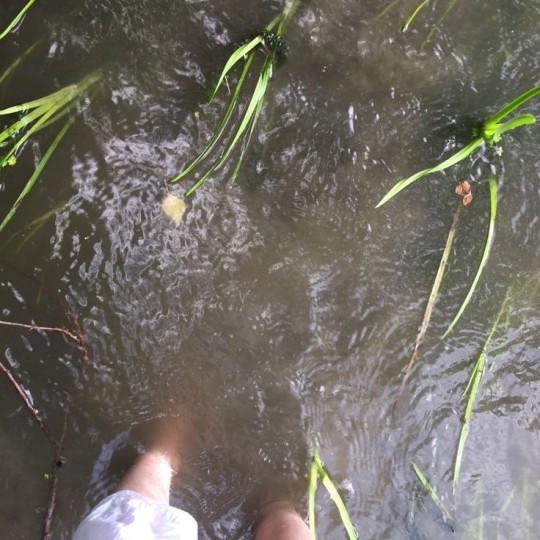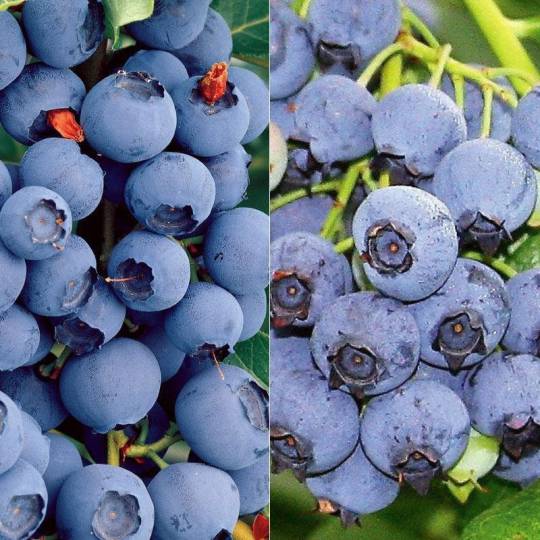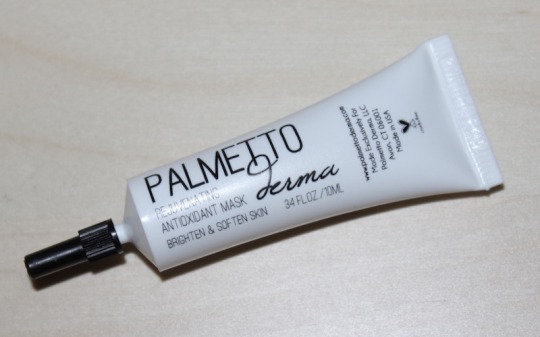#c angustifolium
Explore tagged Tumblr posts
Text




chamaenerion angustifolium
#willowherb#willow herb#chamerion angustifolium#chamaenerion angustifolium#c angustifolium#summer flowers#flower#flowers#floral#florals#floral photography#summer#summer photography#summertime#summer days#summer aesthetic#pink flowers#purple flowers#wildflowers#wildflower#wild flower#wild flowers#flower photography#flowers photography#aesthetic#summer feelings#swedish flora#photography#nature#nature photos
48 notes
·
View notes
Text

Fireweed (Chamaenerion angustifolium) glowing in the morning sun
(c) riverwindphotography, August 2023
411 notes
·
View notes
Text

Send this in the group chat and try not to be annoyed when your friends get your vibe all wrong
1- Black vulture (Coragyps atratus)
2- Harnessed tiger moth (Apantesis phalerata)
3- American badger (Taxidea taxus)
4- Long-tailed salamander (Eurocentric longicauda)
5- American alligator (Alligator mississippiensis)
A- Trumpet pitchers (Sarracenia spp)
B- Destroying Angel mushroom (Amanita bisporigera)
C- Dandelion (Taraxacum officinale)
D- California palm (Washingtonian filifera)
E- Fireweed (Chamerion angustifolium)
!- Obsidian
$- Turquoise
%- Pyrite
#- Copper
@- Lapis lazuli
#which combo are you#shitposts#please for the love of god geologists don’t hassle me on the mineral thing#for the nitpicks out there when I say North American I mean ‘can be found in but is not necessarily exclusive to’#just trying to get my fellow Americans excited about the things they can find outside their door
196 notes
·
View notes
Text




























once in a blue moon June
via Pinterest // Hayley Williams // Bethel Music ft. Cory Asbury & Gable Price // The National // Sylvia Plath // E. E. Cummings // Kelly Clarkson // Carl Philips // Ellen Bass // Tumblr user @cannibalchicken // Billy Joel // Tumblr user @nehmesis (via Pinterest) // via Pinterest // Zbigniew Herbert // Tumblr user @lordbyronsays // Taylor Swift // unknown // Wikipedia page for C. Angustifolium, also known as "fireweed" // Dante Émile (@orpheuslament)
#the caption is kind of from eden. she knows what's up.#Lu rambles#web weaving#cruel summer? no. cool summer
164 notes
·
View notes
Text

Epilobium Angustifolium (Willow Herb) (c. 1900), Charles Jones
108 notes
·
View notes
Text




C – Chamaenerion angustifolium (L.) Scop. (= Epilobium a.) – Garofanino maggiore (Onagraceae)
17 notes
·
View notes
Link
Check out this listing I just added to my Poshmark closet: MONAT C. Radiance™ Illuminating Serum 30 mL 1 oz New Sealed in Box OP$97.
0 notes
Text
Rose + Jasmine Biodegradable Herbal Facial Sheet Mask 0.88 (25g) fl. oz x 5 Pack
Nourishing Rose provides an essential glow and has Vitamin C to help stimulate collagen, and enriched with Vitamin E for moisturizing skin. Hydrating Jasmine increases skin’s elasticity and helps balance moisture in skin to naturally reduce dryness. Infused with other beneficial elements like Hyaluronic Acid, Peony flower and Aloe Vera Leaf Juice.

HOW TO USE
1. Remove from pouch and gently unfold mask. 2. Apply mask on face and align it around eyes and mouth. 3. Once positioned, remove the protective mesh layer. 4. Wait for 15-20 minutes and remove cellulose sheet mask. 5. Gently pat essence until fully absorbed into skin. No need to rinse
INGREDIENTS
Aloe Barbadensis Leaf Juice, Butylene Glycol, Glycerin, 1,2-Hexanediol, Water/Aqua, Trehalose, Ammonium Acryloyldimethyltaurate/VP Copolymer, Ethylhexylglycerin, Sorbitan Sesquioleate, Rose Extract, Jasminum Officinale (Jasmine) Extract, Paeonia Albi flora flower Extract, Tocopheryl Acetate, Xanthan Gum, Fragrance, Sodium Hyaluronate, Hamamelis Virginiana (Witch Hazel) Extract, Chamomilla Recutita (Matricaria) flower Extract, Rubus Fruticosus (Blackberry) Fruit Extract, Vaccinium Angustifolium (Blueberry) Fruit Extract, Portulaca Oleracea Extract, Morus Alba Fruit Extract, Glycine Max (Soybean) Seed Extract, Hibiscus Sabdariffa flower Extract,Melissa Officinalis Extract, Punica Granatum Fruit Extract, Centella Asiatica Leaf Extract.
CAUTION
For external use only. Avoid contact with eyes and hair. Do not use if you have any skin conditions. Discontinue use and consult a doctor immediately if any adverse reactions develops.
0 notes
Photo










Went to Alberta saw some plants and my family. Anticlea eleagans, two Symphyotricum sp.’s, A. eleagans and Hedyasarum sp. (maybe boreale), Chamaenerion angustifolium and Populus tremuloides, Calendula rows, summit of Prairie Mountain, the meadow there with more A. eleagans, cows in the shade, more C. angustifolium and Solidago sp.
1 note
·
View note
Photo

Delicious Blueberry Huge mix blend of Seeds, Organic Fruit, Ornamental, Superfood, Antioxidant B25 Nothing Tastes Better Than Fresh Blueberries Picked From Your Own Garden! Blueberry mixed seeds. Evergreen shrub, fruit is a berry blue/black waxy appearance. A high tolerance to high summer temps. Drought tolerance delivers superior fruit quality. Also grown as ornamental
Early yields Large berries of excellent quality May bloom in fall in warm climates Great fall ornamental Easy to grow Requires little care Pests and disease resistant High in Anthocyanins and antioxidants
Tips & Fun Facts for Caring for Blueberry Plants 1. Blueberries love Acidic Soil! 2. They Need to Be Pruned. 3. Select an elevated site, such as a hill. If one does not exist, plant blueberries in a raised bed. 4. Make sure your planting location has good drainage. 5. Test the soil before planting. Blueberries like acidic soil with a pH range between 4.8 to 5.2. 6. Space plants six feet apart. 7. Plant at least two varieties for cross-pollination. 8. Water the plant after planting and top the soil surrounding the plant with sawdust mulch. 9. Remove all flower buds at the time of planting to encourage strong root development. 10. Weed early in the spring, before harvest season begins. 11. Keep a 2 to 3-foot weed-free circle surrounding each blueberry bush. This has been proven to increase the yield of berries produced. 12. Young blueberry plants can easily be damaged by weed-eaters. To protect tender plants, place a thick tree protector around the base of each plant. With a little care, an established blueberry plant will produce berries for 20 to 30 years before needing to be replaced.
Did You Know? They require full sun, well-drained soil, and a low pH between 4.5 and 5.5 Grow varieties that are suited to your climate. Plant several varieties to ensure proper pollination and a plentiful bounty of fruit. To extend the harvest season, plant different types that produce fruit in early, mid and late summer. The fruit is very high in antioxidants. They are also high in vitamin C and a good source of vitamin E. They are one of the only natural foods that are actually blue in color. Store fresh crops in an open container to reduce condensation, and keep in the refrigerator. Do not wash freshly picked crop until just before serving. Freeze fresh blueberries! Place unwashed ones in a single layer on a sheet tray, and place in the freezer. Store frozen berries in a plastic storage bag. Native Americans called them "star berries" because the shape of the flower resembles a star shape.
This Blueberry blend has delicious fruits, outstanding flavors, beautiful spring flowers, and brilliant fall colors in a range of sizes and ripening dates. They are wonderful eaten fresh and are perfect for freezing.
Start the blueberry season off with large, high-quality, flavorful berries. Blueberry Plant is one of the earliest ripening southern highbush varieties. The large berries are of excellent quality and are tops for fresh eating as well as baked into pies or other desserts. This plant will often start blooming in the fall in the southern half of zone 8 and into zone 9, and continues blooming during warm periods until normal bloom time. The main crop ripens in late April to May. The plants grow 6 ft. tall and, while self-pollinating, produce larger yields when other blueberry plants are planted for cross-pollination. Zones 7-9.
The blend may contain some of these varieties depending on the season, and availability. We can not guarantee all varieties since they are mixed and randomly packed. Varieties: [northern highbush (Vaccinium corymbosum), lowbush species (V. angustifolium), V. virgatum] Northern And Southern Highbush, midnight cascade, chippewa, mini blues, native blue, northcountry, top hat, burgundy, notyhsky, velvetleaf, aurora, bluecrop, baby blues, blueray, bluejay, brigita, chandler, cabernet splash, darrow, draper, Brigitta, Duke, Gulf Coast, Jersey, Sunshine Blue, earliblue, elliott, hannah's choice, liberty, patriot, pink icing, pink popcorn, razz, rubel, spartan, superior, sweetheart, toro, emerald, jewel, jubilee, legacy, misty, nocturne, norman, ochlockonee rabbit-eye, o'neal, pink lemonade, sunshine blue, and much more.
Growing Blueberries from seeds ------------------------------- Beginning with the most challenging option, you can grow blueberries from seed, but it will obviously take longer to produce your first harvest than it would if you started with established plants.
Seeds can be purchased or you can extract them from the berries. Keep in mind that seeds from hybrid plants won’t grow true to the parent.
To extract seeds, place a cup of blueberries in a blender with four cups of water. Run it on high for 15 seconds and then let the mixture sit for 10 minutes.
Eventually, the pulp will rise to the top and the seeds will sink to the bottom.
Pour out the pulp, add more water to replace what you poured out, and set it aside for another five minutes. Repeat until you get clear water with blueberry seeds at the bottom.
A few months before the last frost date in your area, sprinkle your seeds over a container filled with moistened peat moss.
Place a thin layer of peat on top to cover. Cover the tray with a piece of plastic or a humidity dome to keep the moisture in. Keep the seeds around 60-70°F.
Now comes the waiting game. Every time I’ve done this I’m pretty sure my seeds are duds and I get ready to toss the whole thing out, only to see the little green seedlings stick their heads out of the peat.
That’s because it can take a month or two – or sometimes three! – for seeds to germinate. And I’m impatient.
Once seedlings are about three inches tall, remove them from the peat and put each one in a six-inch pot filled with equal parts peat, sand, and potting soil.
Keep the medium moist but not wet, and put the seedlings in a spot where they receive about six hours of sun a day.
A close up horizontal image of Vaccinium shrubs growing in nursery pots ready to transplant into the garden. Once the danger of frost has passed, you can put the plants in the ground outside, but be sure to harden them off for a week before transplanting them to their permanent home.
Harden off seedlings by placing them outside in a sheltered spot with indirect light for one hour, and then bring it back indoors. Repeat this, adding an hour each day for a week, until they can spend the full day outside.
Because the seeds need such carefully controlled conditions, direct sowing in the garden isn’t recommended.
Planting the Bushes ------------------------------- The ideal time to plant blueberries is when the plant is dormant, before fruit appears. They may be planted in either the fall or spring. It generally takes three to five years for a blueberry plant to produce a good yield, but even the smallest plants will have some berries in the first or second summer. Left unpruned, blueberry plants will reach a height of 10 to 12 feet! Spring is the best time to plant a new blueberry bush. Dig a hole twice as deep and twice as wide as the nursery pot, and amend the soil with compost. Test your soil to determine the pH level and if needed, add peat moss or a fertilizer formulated for azaleas.
Mulch the planting bed with 3 to 4 inches of wood chips, and keep the new plant well watered until it becomes firmly established. They have a shallow root system and the mulch helps to retain moisture while inhibiting weeds.
The plants are fast growers, and begin to produce fruit in their third or fourth year of growth.
Harvesting a Fresh Batch ------------------------------- It's hard to beat the taste of a freshly picked blueberry!
Depending on the variety, the crop begins to ripen in early summer. The clumps of greenish berries begin to turn reddish-purple, and the color deepens as the berry ripens. Ripe fruit is a lustrous, deep purple, and a gentle tug is all that's needed to encourage the berry to release its grip from the plant. Shaking a branch lightly over a basket or sheet of newspaper will result in a pile of ripened produce.
The fruit will continue to ripen for several weeks and in our area, we pick berries every few days from late June through early August. Planting several different varieties that ripen in early, mid and late summer extends the harvest season. http://springsofeden.myshopify.com/products/delicious-blueberry-huge-mix-blend-of-seeds-organic-fruit-ornamental-superfood-antioxidant-b25
#Blueberry#Blueberry seeds#dwarf blueberry#fruit seeds#fruit tree#non gmo seeds#Northern Highbush#organic seeds#Southern Blueberry#Southern Highbush#superfood#V angustifolium#Vaccinium corymbosum
0 notes
Photo

FABERLIC Oxiology Oxygen Balance Matting Day Cream Oxiology Oxygen Balance Matting Day Cream 4D target active formula with cosmetic drones saturates the skin with oxygen for a radiant healthy glow. Patented Aquaftem O2 oxygen complex delivers oxygen directly to the skin. Arginine visibly increases hydration. Encapsulated complex Turmerine fights signs of oxidative damage. Cosmetic drones help to deliver active ingredients to skin with maximum effectiveness. Oxiology Oxygen Balance Matting Day Cream : Mattifies and moisturizes skin. Great as a makeup base. Mattifying powder made from deep-sea algae hides shine and visually evens out skin tone. Willowherb Supplement calms the skin. Shelf life: 18 months from the manufacture date (see the packaging). Volume:1.69 Fl Oz Collection: Oxiology *These statements have not been evaluated by the Food and Drug Administration. This product is not intended to diagnose, treat, cure or prevent any disease. COMPOSITION AQUA (WATER), ISOHEXADECANE, CYCLOPENTASILOXANE, BUTYLENE GLYCOL, TAPIOCA STARCH, DIMETHICONE, POLYACRYLAMIDE, ARACHIDYL ALCOHOL, BEHENYL ALCOHOL, ARACHIDYL GLUCOSIDE, DIMETHICONE CROSSPOLYMER, PERFLUORODECALIN, POLOXAMER 188, PERFLUOROPOLYMETHYLISOPROPYL ETHER, TURMERONE, TETRAHYDRODIFERULOYLMETHANE, ARGININE, CHLORELLA VULGARIS EXTRACT, GLYCOLIC ACID, LACTIC ACID, POLYVINYL ALCOHOL, HEPTAPEPTIDE-15 PALMITATE, PLANKTON EXTRACT, EPILOBIUM ANGUSTIFOLIUM FLOWER/LEAF/STEM EXTRACT, PANTHENOL, SERENOA SERRULATA FRUIT EXTRACT, SESAMUM INDICUM SEED OIL, ARGANIA SPINOSA KERNEL OIL, BETA-SITOSTEROL, TOCOPHEROL, DIPOTASSIUM GLYCYRRIZINATE, HAMAMEL (HONEY)IS VIRGINIANA LEAF WATER, POTASSIUM SORBATE, SODIUM BENZOATE, GLUCONOLACTONE, CALCIUM GLUCONATE, ALLANTOIN, C13-14 ISOPARAFFIN, LAURETH-7, DISODIUM EDTA, LECITHIN, ETHOXYDIGLYCOL, PROPYLENE GLYCOL, DIAZOLIDINYL UREA, METHYLPARABEN, PROPYLPARABEN, PHENOXYETHANOL, ETHYLHEXYLGLYCERIN, SODIUM METABISULFITE, PARFUM (FRAGRANCE), BUTYLPHENYL METHYLPROPIONAL, LIMONENE, CI 19140 (FD&C YELLOW NO. 5), CI http://nemb.it/p/2uzpX9Cjo/tumblr
0 notes
Text
Palmetto Derma Rejuvenating Antioxidant Mask

Price: $64.00
Claims: Welcome to an antioxidant treasure trove! This mask puts your skin on the fast track to soft, smooth and glowing! The soft clay of the mask gently purifies skin, by absorbing impurities and cleaning pores and skin. The advanced antioxidants defend against free radicals and reverse daily skin damage. This mask is whipped-up to velvety perfection for luxurious and easy application. The cooling effect refreshes and soothes the skin as the mask works its magic, leaving skin bright and smooth! Our Rejuvenating Antioxidant mask includes ingredients such as Hyaluronic Acid to hydrate skin, while the preventative ingredients work to enhance skin for lifelong radiance. Get ready to feel tingly all over when you see these stellar results!
Ingredients:
Aqua (Water): Primarily used as a solvent in cosmetics and personal care products in which it dissolves many of the ingredients that impart skin benefits, such as conditioning agents and cleansing agents. Water also forms emulsions in which the oil and water components of the product are combined to form creams and lotions.
Organic Aloe Barbardensis Leaf (Aloe Vera Extract): Extracted from the leaves of the aloe plant; used as a skin softener, anti-irritant, and moisture replenisher.
Kaolin Clay: A fine white clay powder; used to absorb water and oil secreted by the skin, including excess sebum.
Glycolic Acid: An alpha hydroxy acid (AHA) used to help maintain natural pH levels and gently exfoliate surface skin cells.
Squalane: The saturated portion of emollient ingredient squalene, which is a natural component of human skin sebum (oil). It is a wonderfully moisturizing ingredient as well as being a source of replenishing fatty acids and antioxidants. Note that because it’s highly saturated, squalane is less prone to breaking down in the presence of air than less-saturated squalene.
Lactic Acid: Helps to control the pH of finished cosmetic products
Isopropyl Palmitate (Derived from Palm Oil): Texture enhancer and emollient as used in cosmetics. It can potentially be problematic for those with oily skin, depending on the amount in the product and your skin’s response. May be synthetic or derived from plant and animal sources.
Sodium Ascorbyl Phosphate (Vitamin C): A stable, water-soluble form of vitamin C that functions as an antioxidant and is potentially effective for brightening an uneven skin tone.
Hydrogenated Castor Oil: An emollient, though its unique property is that when dry it forms a solid film that can have water-binding properties. Castor oil can also enhance the absorption of other cosmetic ingredients. It is rarely associated with skin sensitivity, but can have a slightly sticky feel on skin.
Kosher Vegetable Glycerin: An emollient and humectant derived from vegetable oils that helps skin retain moisture.
Sodium Stearate: Emulsifies ingredients and creates lather. It also emulsifies formulas, preventing them from separating into oil and water-based components.
Cetearyl Alcohol: Helps two or more liquids, that don't usually combine to form a single liquid; often referred to as an ‘emulsion'
Cetearyl Glucoside: Formed by the condensation of cetearyl alcohol (fatty acid) with glucose. Can be naturally derived (from coconut/corn oil) or chemically synthesized. An emulsifier used in oil in water formulations. It helps skin and hair retain moisture, and gives a velvety after touch.
Stearyl Alcohol: A naturaly fatty alcohol derived from stearic acid, coconut oil or vegetable fatty acids, and is used to soothe and soften as a conditioning agent and as an emulsifier. It can also be used to thicken formulas, adding body and viscosity.
Organic Cocos Nucifera (Coconut Oil): Emollient oil expressed from coconut kernels, a moisturizing surfactant and emollient. Seals in moisture to protect tresses from breakage and excessive heat exposure.
Cetyl Alcohol: Works as an emollient, emulsifier, thickener and carrying agent. It keeps the oil and water parts of an emulsion from separating, and gives products good spreadability. As a thickening agent and surfactant, it helps alter the viscosity and increase the foaming capacity of non-aqueous and aqueous solutions. It is often misinterpreted as an "alcohol" related to ethyl or rubbing alcohol, both of which can be extremely drying to the skin. The truth, in fact, is quite the opposite, as cetyl alcohol is well known to effectively condition and soften the skin and hair. Because of its multi-functional capabilities.
Sodium Hydroxide: An inorganic compound used to control the pH levels or serve as a buffering agent. Has the ability to dissolve grease, oils, fats and protein based deposits. Considered a strong irritant.
Alpha Lipoic Acid: An enzyme that, when applied topically on skin, appears to be a very good antioxidant. Taken internally, alpha lipoic acid is a water- and fat-soluble antioxidant capable of regenerating other antioxidants, such as vitamins C and E. It is also believed to exert numerous soothing effects.
Vaccinium Angustifolium (Blueberry): A botanical extract rich in antioxidants, such as anthocyanins and flavonoids.
Organic Vaccinium Macrocarpon (Cranberry): Extract of the cranberry fruit. Natural components known as proanthocyanidins are responsible for this extract’s antioxidant and skin-soothing properties.
Prunus Amygduls Dulcis (Sweet Almond Oil): Extracted from the seeds; used as an emollient. Helps skin maintain optimal moisture balance
Vitis Vinifera (Grapeseed Oil): An antioxidant that helps fight damaging free radicals that can cause premature signs of aging.
Wildcrafted Mahonia Aquifolium (Oregon Grape): A plant extract known as Orgeon grape, it functions as a calming ingredient, antioxidant, and astringent.
Wildcrafted Camellia Sinensis (Green Tea): Tea plant native to Asia that helps fight free radicals; known for its antioxidant and anti-irritant properties.
Organic Glycyrrhiza Glabra (Licorice): Used as a whitener, antioxidant, anti-inflammatory and moisturizer. Helps control oil production, and helps calm and soothe acne-prone skin. It can be used to reduce dark age spots and whiten skin.
Wildcrafted Myrica Cerifera (Bayberry): Works as an antiseptic, thickening agent and emulsifier with soothing and softening properties that heal the skin.
Rubus Idaeus (Raspberry Seed Oil): Extract of the raspberry fruit, helps fight free radicals, soothe and condition skin.
Hippophae Rhamnoides (Seabuckthorn Oil): Berry extract that grows on a shrub-like tree. The fruit of this plant contains malic and acetic acids (AHA-like ingredients that give the fruit an astringent, acidic taste) as well as beneficial compounds known as flavonoids, plus fatty acids. Sea buckthorn is a rich source of vitamin C, but most of it is lost when the fruit is processed for production (which includes manufacture for use in cosmetics products).
Organic Simmondsia Chinensis (Jojoba Oil): Extracted from the desert shrub; used as a moisturizer and emollient.
Calophyllum Inophyllum (Tamanu Oil): From a tree native to Polynesia, all of the miraculous claims attributed to it are hinged on anecdotal, not scientific, evidence. There’s no harm in using this oil in skin care—like most oils, it is composed of phospholipids and glycolipids, and these are natural constituents of healthy-looking skin and are good hydrating agents.
Rosa Canina (Rose Hip Oil): Protects hair from UV and free-radical damage and delivers antioxidants and essential fatty acids to tame frizz and balance hydration.
Ubiquinone (Coenzyme Q10): A vitamin-like, fat-soluble substance naturally present in the body. Applied to skin, it can have antioxidant benefits due to its energizing effect on factors in skin that tend to slow down with age and cumulative sun exposure.
Prunus Armeniaca (Apricot Kernel Oil): Emollient plant oil pressed from the seeds of apricots, and similar to other non-fragrant plant oils in terms of its emollient, skin-smoothing, and antioxidant benefit.
Phytic Acid: Component of plants that has antioxidant properties.
Phospholipids: Phospholipid found in egg yolks and plants. Widely used in cosmetics as an emollient and water-binding agent. Also has skin-restoring ability.
Tocopherol (Vitamin E): Used as an antioxidant and skin conditioner.
Lecithin: An emollient and water-binding agent. Also has skin-restoring ability.
Pyrus Malus (Apple): Helps fight free radicals, soothe and condition skin.
Citrus Medica Limonum (Lemon): A citrus fruit used in skincare for its astringent properties.
Saccharum Officinarum (Sugar Cane): Sugar canes are the main source of glycolic acid. An alpha hydroxy acid (AHA) used to help maintain natural pH levels and gently exfoliate surface skin cells.
Cymbopogon Schoenanthus (Lemongrass): Used for its purifying properties.
Ascorbyl Palmitate (Vitamin C Palmitate): Stable and nonacidic form of vitamin C that is effective as an antioxidant. Particularly effective at reducing environmental damage.
Sclerotium Gum: Used as a thickening agent.
Potassium Sorbate: Used as a preservative, almost always used in conjunction with other preservatives.
Xanthan Gum: Natural ingredient used as a thickening agent, texture enhancer, and to stabilize emulsions, which is a general term for mixtures of unlike substances such as oil and water.
Phenoxyethanol: A glycol ether and bactericide (that functions as a disinfectant, antiseptic or antibiotic) that is primarily used as a preservative. It is also seen as a fragrance additive.
Benzyl Alcohol: Organic alcohol that occurs naturally in some fruits (apricots, cranberries) and teas. Its chief function in cosmetics is as a preservative, and it’s among the least sensitizing preservatives in use. High amounts of benzyl alcohol can impart a noticeable floral-like scent to products, as it is part of the fragrance makeup of some essential oils such as jasmine. As a volatile alcohol, it can pose a risk of sensitivity when used in high amounts, but is considered safe as used in cosmetics.
Organic Centella Asiatica (Gotu Kola Extract): Known as "the fountain of life,” a natural, herbal anti-inflammatory and wound healer. Mildly antibacterial, anti-viral, anti-inflammatory, anti-ulcerogenic, anxiolytic, a cerebral tonic, and circulatory stimulant. Strengthen the skin, boost antioxidants in wounds, and increase blood supply to the area. It's also thought to boost the production of type I collagen and myofibroblasts. Based on these findings, its been used topically for minor burns, psoriasis, prevention of scar formation following surgery, and prevention or reduction of stretch marks.
Organic Equisetum Arvense (Horsetail Plant Extract): A perennial plant, also called "scouring rush." Its extract is used for its astringent, softening, and strengthening properties.
Organic Pelagonium Gravoleons (Geranium Extract): Extract that can have potent antioxidant properties. The oil form of geranium is fragrant and can be a source of sensitivity.
Cranberry Fibers: Gentle exfoliant
Hibiscus Petals: Soothe the scalp and soften the hair follicles.
Cassia Angustifolia Seed Polysaccharide: A skin conditioning agent. Effectively repair dryness, provide long lasting suppleness & moisture, exhibit film-forming capacities and retain water on the surface of both skin and hair. In can also function as an anti-inflammatory and treatment for acne.
Wildcrafted Vinca Major (Periwinkle): A skin conditioning agent. Astringent and soothing.
Dipeptide Diaminobutyroyl Benzylamide Diacetate (Peptides): A synthetic neuro peptide. This skin conditioning agent is categorized as a neuro-peptide, and believed to block the body's uptake of Na+, which in turn causes the facial muscles to relax and prevent the formation of expression lines (wrinkles). It serves as the active ingredient contained in SY-NAKE- an anti-wrinkle product that claims this ingredient to mimic the effects of Walgerin 1- a peptide found in snake venom known for its muscle relaxing properties.
Taraxacum Officinale (Dandelion Extract): Has astringent and soothing properties.
My Thoughts: I recently adopted a german shepherd puppy. She is cute but insane. She loves to jump on my face in the morning. She has left me with a few scars. I needed something that would hydrate my skin and and heal it quickly. I decided to see if Palmetto Derma Rejuvenating Antioxidant Mask was up to the task.
Palmetto Derma Rejuvenating Antioxidant Mask came from my Ipsy box. Its a sample size with a squeeze tube. This squeeze tube was different because it didn’t have an opening. I had to cut the pointed squeeze applicator before using it. The clay texture is off white with black speckles. I use this probably every other day. With this clay mask I gently pat it on. I immediately smelled of pepper! At first it was overwhelming but I eventually got use to it. I leave it on for about 5 minutes, it doesn’t feel tight on the skin at all. Than I rinse it off in a circular motion. The circular motion helps remove the dead skin on the surface, without leaving my skin red. Its gentle enough for me to use it every other day, it nicely hydrates my skin. It even healed my scars in 2 weeks! What I love the most is it makes my skin soft and smooth to the touch. What I hate the most is that this mask is crazy expensive.
Would I purchase Palmetto Derma Rejuvenating Antioxidant Mask? Yes because it leaves my skin feeling amazing because it removes dead skin on the surface. However I will only purchase it if is on sale.
Pros:
Received from Ipsy
Sample size squeeze tube
Clay texture
Off white with black speckles
Gentle on the skin
Pepper scented
Leave on for 5 minutes
Comfortable to wear
Remove dead skin on the surface
Doesn’t leave skin red
Hydrates & heals skin
Soft & smooth skin
Cons:
Have to cut off the tip of the applicator to use
Expensive
If you found this review helpful please click on the heart or reblog. Feel free to reply with your thoughts on the product.
#Palmetto Derma Rejuvenating Antioxidant Mask#Palmetto Derma#Palmetto#review#reviews#blog#blogs#love#loves#like#likes#heart#hearts#reblog#reblogs#reply#tumblr#tumblr blogs#tumblr blog#tumblr review#tumblr reviews#beauty#beauty reviews#beauty review#beauty blog#beauty blogs#beauty product#beauty products#skincare#skincare blog
5 notes
·
View notes
Photo

Fireweed (C. angustifolium)
2 notes
·
View notes
Text

@haumericthevaliant asked: 💮 MEME: SEND 💮 AND MY MUSE WILL TELL YOU WHAT FLOWER MAKES THEM THINK OF YOUR MUSE!


“Epilobium angustifolium; endlessly stubborn, the plant otherwise known as Rosebay Willowherb is known for growing back after endlessly harsh treatment and conditions. The leaves can be fermented to make medicinal teas and apparently tastes like sweet cucumber; it also has ninety times more vitamin A and four times more vitamin C than an orange, meaning its a wonderful aid for scurvy; also soothing and anti-inflammatory. Much like yourself, ser - - your very company puts one at ease.”
1 note
·
View note
Photo


Garofanino maggiore (Chamaenerion angustifolium (L.) Scop. (= Epilobium c.), Onagraceae) (da vecchie dia)
22 notes
·
View notes
Link
Check out this listing I just added to my Poshmark closet: MONAT C. Radiance™ Illuminating Serum 30 mL 1 oz New Sealed in Box OP$97.
0 notes